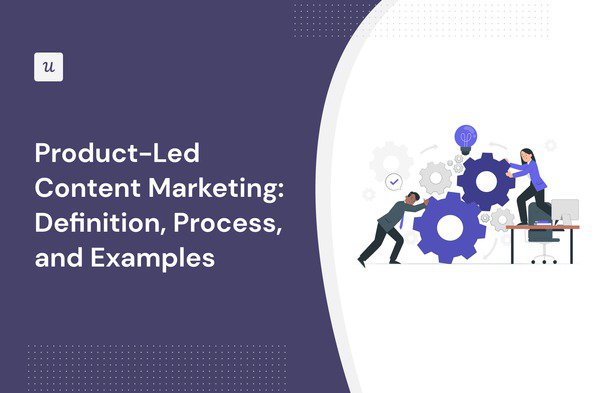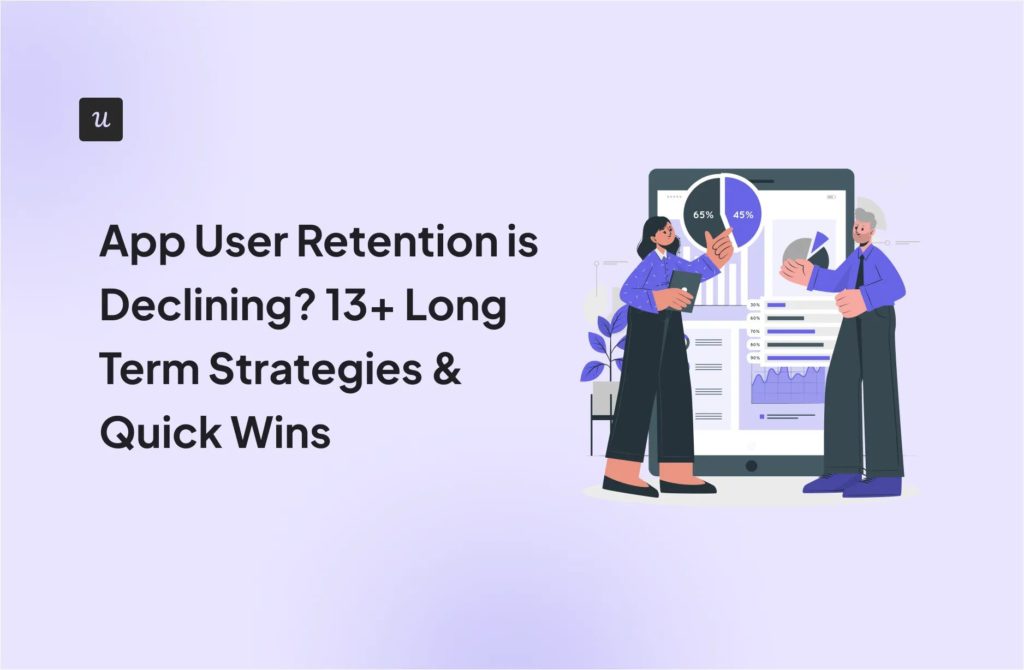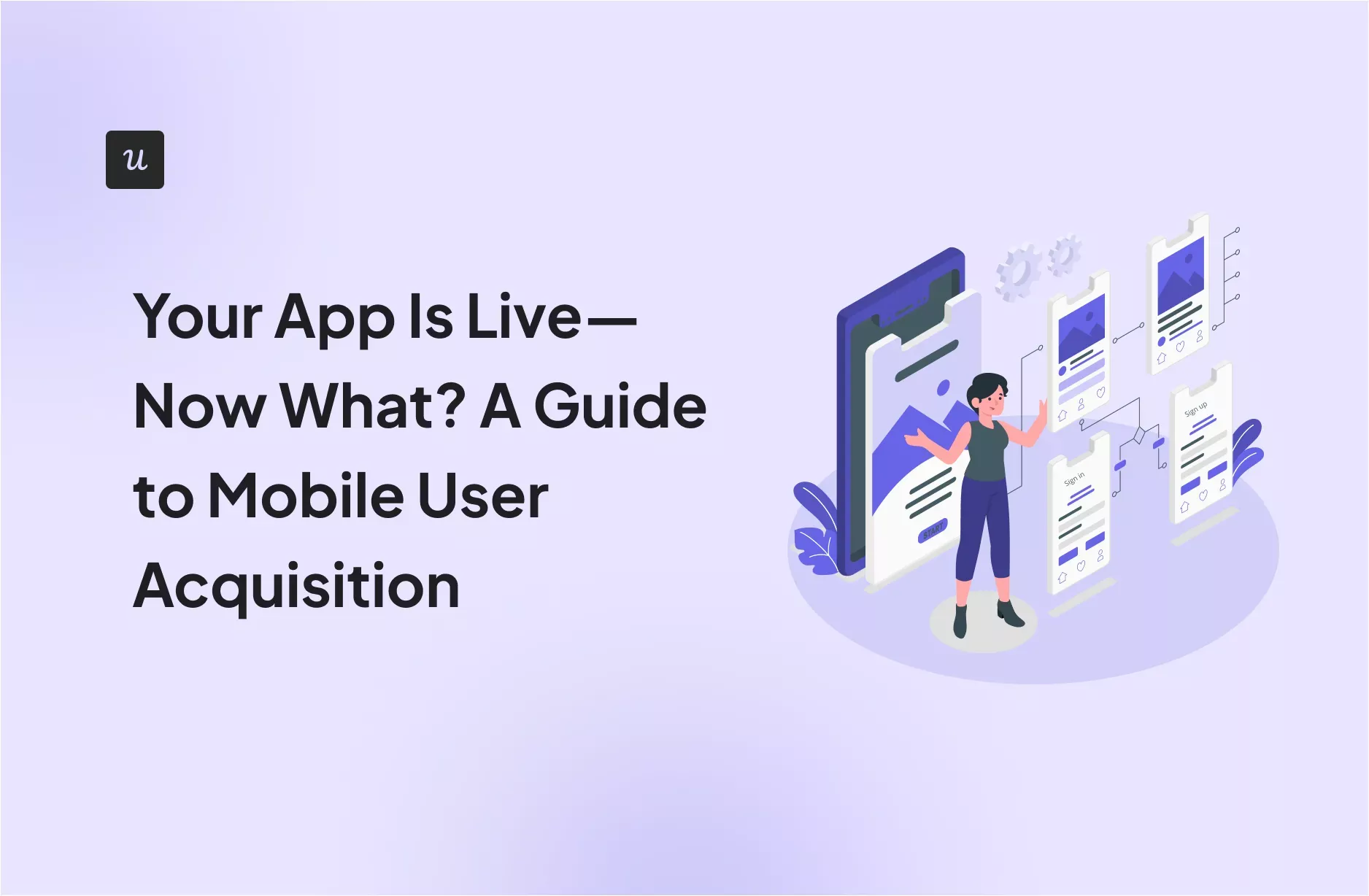
If you’ve been in the SaaS space for a bit, you must have heard about product-led growth strategy or product-led sales. But what about product-led content marketing?
Our article explores what it is, its different types, and why it’s worth your time and resources. More importantly, we show you how to implement it in your organization and share some examples of excellent product-led content strategies.
Let’s get right to it!
Get The Insights!
The fastest way to learn about Product Growth, Management & Trends.
What is product-led content marketing?
Product-led content marketing is a strategy with a goal to promote the product by showing users how to use it to solve their problems.
Let’s imagine you’re trying to promote onboarding software, like Userpilot. To help your customers optimize the onboarding process, you could write a blog post on client onboarding. In that article, you help users navigate the optimization process and show them how to do it with your tool.
Such a guide kills two birds with one stone: it helps customers address a relevant pain point and promotes your product as a solution.
The importance of creating product-led content
Why should you invest your marketing resources into product-led content?
I can think of at least 3 main reasons.
Assists in customer acquisition
For starters, product-led content is more effective at driving customer acquisition than traditional marketing – and it costs less.
Here’s why:
First, SEO-optimized content illustrating how to use your product to satisfy common problems makes it easier for prospective customers to find the product.
It isn’t about merely getting on their radar though.
Your content demonstrates the value of your product, which may be enough to make them book a demo or sign up for a free trial to find out more. And by providing guidance on how to use the product, it increases the chances of its successful adoption.
Helps build trust and credibility
Creating informative and high-quality content with the product at its core can help your company build trust and establish itself as an authority in its field. It also demonstrates that your product can deliver on its value promise.
This credibility can be a significant factor in a customer’s decision to purchase the product. According to Demand Gen’s 2022 report, 73% of B2B buyers engage with at least 3 pieces of content before taking further steps.
Guides existing customers toward product success
Product-led content is not only about convincing users to buy the product but also enabling them to achieve their goals.
By educating users on how to realize the product’s full potential, you increase their chances of success.
This translates into high customer retention, loyalty, and lifetime value.
Different types of product-led content marketing
Product-led content marketing is not only about blog posts.
Valuable content comes in different shapes and forms:
- Videos – engaging and excellent for product demos and tutorials
- Case studies – powerful for demonstrating the value and real-world application of your product
- Research reports – excellent for building your brand credibility (e.g., Userpilot’s State of SaaS Onboarding report)
- Infographics – ideal for explaining complex topics or presenting statistics in an easy-to-digest format
- Whitepapers and ebooks – great for sharing more in-depth insight into the topic
- Checklists and templates – useful as they provide practical solutions to user problems, e.g., our onboarding checklist
- Email newsletters – ideal for keeping the audience in the loop
- Podcasts – enabling in-depth discussions on topics relevant to your audience in an accessible format
- Social media posts – essential for building brand presence and engaging with audiences
- Webinars – either live or pre-recorded, effective for user education and lead generation
Here’s the real kicker:
Creating all this content doesn’t necessarily require huge resources because it’s easy to repurpose one piece of content in different formats to maximize its reach. For example, you can use the data from your research report in an infographic and distribute it via social media.
How can SaaS companies create product-led content?
If you’re still reading, you probably want to learn how to create valuable and effective product-led content.
Research your target audience to understand their pain points
Customer and market research are vital for creating content that delivers value. After all, you can’t help your users if you don’t understand their pain points, needs, and wants.
Start by tapping into your user base:
- Run in-app surveys about the challenges they face and ask your customer success team for their insights
- Conduct interviews and focus groups
- Analyze user behavior in-app to identify areas where they experience issues
Next, analyze the content of your competitors. Use SEO tools like Ahrefs or Semrush to identify topics they cover, but you don’t.
SEO tools like Google Trends can also help you identify the keywords that potential customers could be interested in.

Understand your product and its use cases
Your research will reveal lots of potential issues to cover but it doesn’t mean automatically creating content on all of them. That’s because your product may not address some of them.
To avoid wasting your time and resources on creating irrelevant content, make sure you understand what your product does and what it doesn’t.
Product documentation and existing onboarding resources could be a place to start. If you’re lucky, your company may have an employee-focused LMS that will help you learn about your product’s use cases.
This will help you identify the pain points of potential customers that are aligned with your product’s capabilities. Only these will be the focus of your content.

Brainstorm topics on solving customer challenges
Now that you know which user problems to address in your content, generate specific topics to cover.
As mentioned, it’s important that the target audience can easily find the content, so use SEO tools for keyword research and optimize your content around it.
In addition to dedicated SEO tools, services like AnswerThePublic could be useful at this stage. You can use them to easily generate dozens of content ideas related to your main search query.

Prioritize MOFU and BOFU topics
Traditional content marketing involves creating content for all stages of the sales funnel. This includes top-of-the-funnel content on general topics, like ‘What is customer education?’.
While these are useful for building your topical authority, they’re only loosely linked to your product.
In contrast, the product-led approach prioritizes topics with greater business potential:
- Middle-of-the-funnel, or MOFU, content, e.g. a step-by-step guide to customer education
- Bottom-of-the-funnel, or BOFU, content, e.g. customer education platforms
Such content targets users who have specific problems to solve and may even be already looking at your product as a solution and is more likely to result in conversions.
Create content for different stages of the customer journey
To create a comprehensive content marketing strategy, use a customer journey map.
Such a map will allow you to create content that resonates with users at different stages of the journey.
For example, for an onboarding tool, this could be:
- Acquisition stage: an SEO-optimized blog post on ’10 proven strategies to improve user onboarding’ could attract potential customers
- Activation stage: a step-by-step guide or checklist on how to create the first onboarding flow
- Adoption stage: a webinar or in-depth blog series on advanced features to enhance user onboarding
- Referral stage: a case study written by or in collaboration with a client on how the product helped them reduce their customer churn
- Revenue stage: a blog post or webinar on how the tool’s premium features can help maximize the ROI

Distribute the product-led content on different channels
To maximize the reach of your content, distribute it via multiple channels.
Common options include:
- Social media platforms
- Email marketing
- Content syndication platforms, like Medium
- Online communities and forums, like Quora or Reddit
- Video platforms, like YouTube or Vimeo
- Press releases
- Guest posts on popular websites
- Paid adverts
Measure the performance of your product-led content marketing efforts
To improve your content marketing efforts, it’s essential to regularly track their performance.
How you do it depends on the distribution channel.
For example, you can track the engagement with how-to guides and video tutorials in Userpilot’s resource center with its analytics features. To see how well your blog is doing, use Google Analytics and SEO tools.
When monitoring your content performance, focus on the metrics that are aligned with your KPIs.
For example, increasing organic traffic to your blog matters only when it results in more free-trial sign-ups.

Examples of companies that have nailed their product-led content strategy
Let’s wrap up with a few product-led content examples that will help you put everything we’ve said into context and hopefully help inspire you to experiment on your own.
Userpilot’s engaging webinars
Userpilot is known for its outstanding content operations. And it’s not only the blog with 100+ articles released every month that stands out.
Userpilot frequently hosts live webinars. These feature known guests from the product world and focus on specific use cases relevant to their target audiences, like leveraging AI for product analytics or improving product adoption.
For a full list of upcoming events, go to the Events page.

Ahrefs informative how-to guides
Ahref’s blog is the gold standard for content marketers.
When I once asked a new client for an example of what the article should look like, he sent me a link to the Ahrefs blog – “We want something like this!”
What are the keys to Ahrefs blog’s success?
The articles are detailed, based on original data from their tool, written in a friendly and accessible tone, and demonstrate immense expertise.
Most importantly, they provide practical and actionable guidance and tips, so that users can easily apply the strategies to their websites without referring to any other resources.

Notion’s detailed case studies
Notion is a productivity and organizational tool that combines note-taking, task management, databases, and project management functionalities into a single, integrated workspace. It’s highly customizable and integrates with other third-party tools, which gives it incredible capabilities.
Given its flexibility and versatility, it may be difficult to demonstrate the full potential of the platform to potential and existing customers.
To overcome the challenge, Notion uses case studies.
Showing how different users have leveraged Notion to achieve their goals can inspire new users to experiment with the tool and help them envision new applications. The case studies also demonstrate the positive impact that Notion implementation can have.

Conclusion
Product-led content marketing enables organizations to acquire new customers, support existing ones, and build trust and authority. It does it by subtly and strategically weaving the product into resources that address genuine user pain points.
If you’d like to learn more about Userpilot and how your SaaS company can use it to enhance its product-led content, book the demo!







